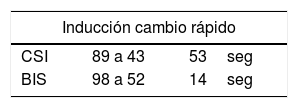En los 20 años de uso de perfusiones controladas por ordenador (target controlled infusion) de propofol se ha puesto en discusión la validez de los modelos que representan el curso del efecto con preguntas como:
¿Representan los índices EEG verdaderamente el efecto? ¿Son los monitores EEG utilizados comparables entre ellos? ¿Cuáles son los tiempos de reacción de estos equipos?
¿Influye la velocidad de administración del fármaco en la modelación del efecto?
¿Cambia el ke0, o el tiempo de efecto máximo con la edad?
¿Sirven los actuales modelos de efecto máximo, teóricamente atemporales? ¿Son la inducción y el despertar fenómenos simplemente de ida y vuelta como representan los modelos de efecto máximo?
Esta revisión discute asuntos relacionados con la complejidad y dificultad en obtener la representación del efecto, y la falta de definiciones consensuadas para poder construir modelos farmacológicos representativos de la instalación temporal del efecto de propofol para su uso en perfusiones controladas por ordenador.
Target controlled infusion (TCI) of Propofol has been the subject of discussion during its 20 years of use, including the validity of the models that represent the course of the effect, such as:
Are the different EEG indexes representative of the effect? Is the reactivity of the EEG index used to build models comparable to each other? What is the real reacting time of each monitor?
Is the ke0 influenced by the infusion speed?
Is the ke0 or the time to peak effect affected by age?
How valid are the current Emax models? Are the induction and wakening simple mirror phenomenon as they are represented in the E max models?
This review discusses issues related to the complexity and difficulty in obtaining a representation of the effect, and the lack of agreed definitions to be able to construct representative models of the temporary installation of the effect of Propofol for its use in TCI.
Artículo
Comprando el artículo el PDF del mismo podrá ser descargado
Precio 19,34 €
Comprar ahora














